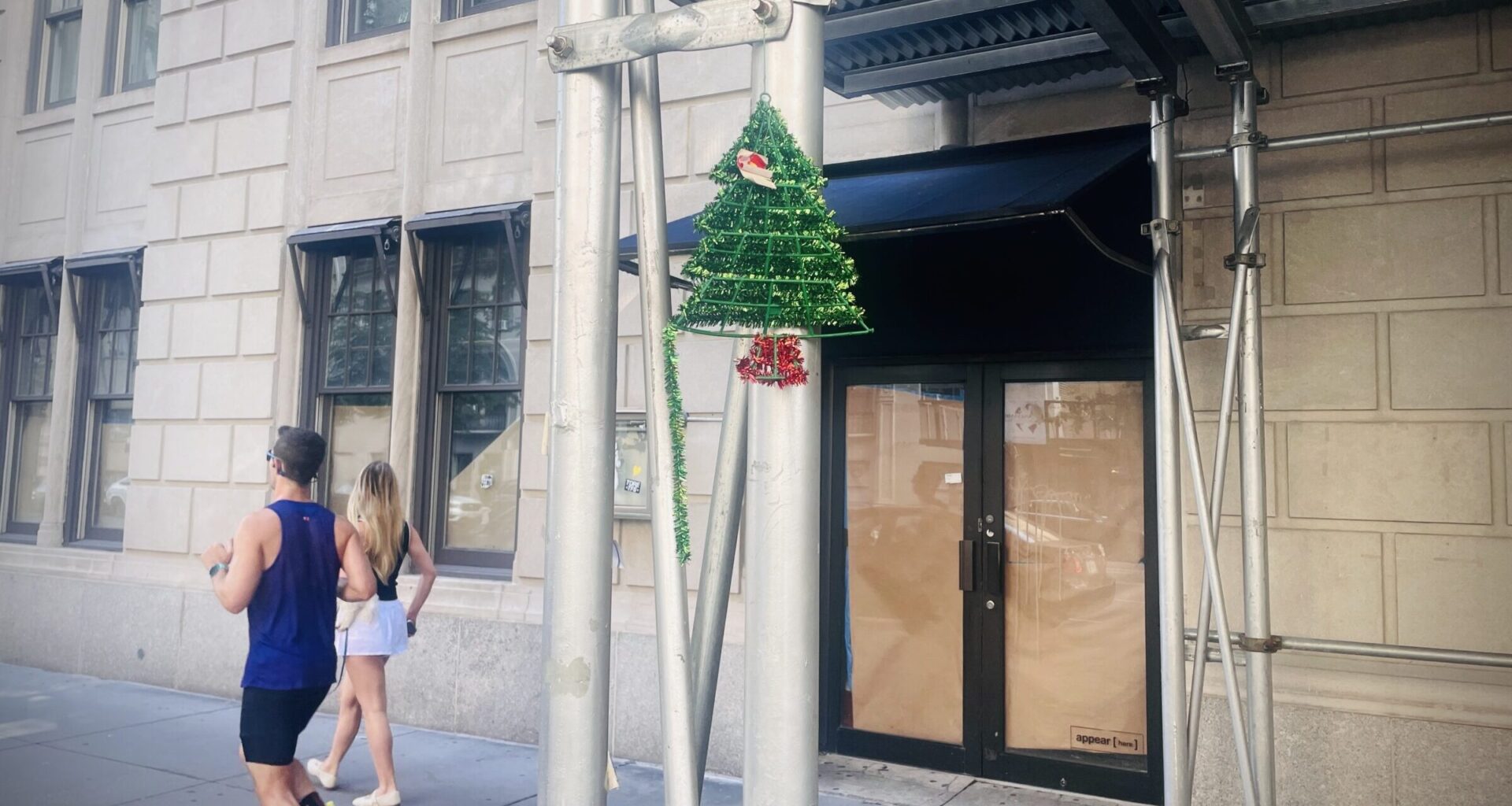 Photographs by Yvonne Vávra.
Photographs by Yvonne Vávra.
By Yvonne Vávra
I was walking down 72nd Street toward Central Park the other day, roasting in July’s sticky heat, when something sparkly swung into view: A tinsel Christmas tree, red and green, swaying gleefully from a scaffolding, festive and unbothered.
Half a year out of season and making the best of it—that’s the spirit. It probably arrived full of cheer, had a jolly blast, and then, come January, when everyone moved on to the next shiny thing, it found a spot to hang on and wait for whatever’s next. This tinsel stuck it out through snowstorms, heat waves, and torrential rains—not to mention pigeons. Its future? Wide open.
The Upper West Side is actually full of quiet survivors. Bikes with flat tires left chained to streetlights, storefronts that still bear the name of the shop that left years ago, posters for events that came and went. There’s a kiosk on Columbus Circle with magazines turned pale blue after a decade on display.
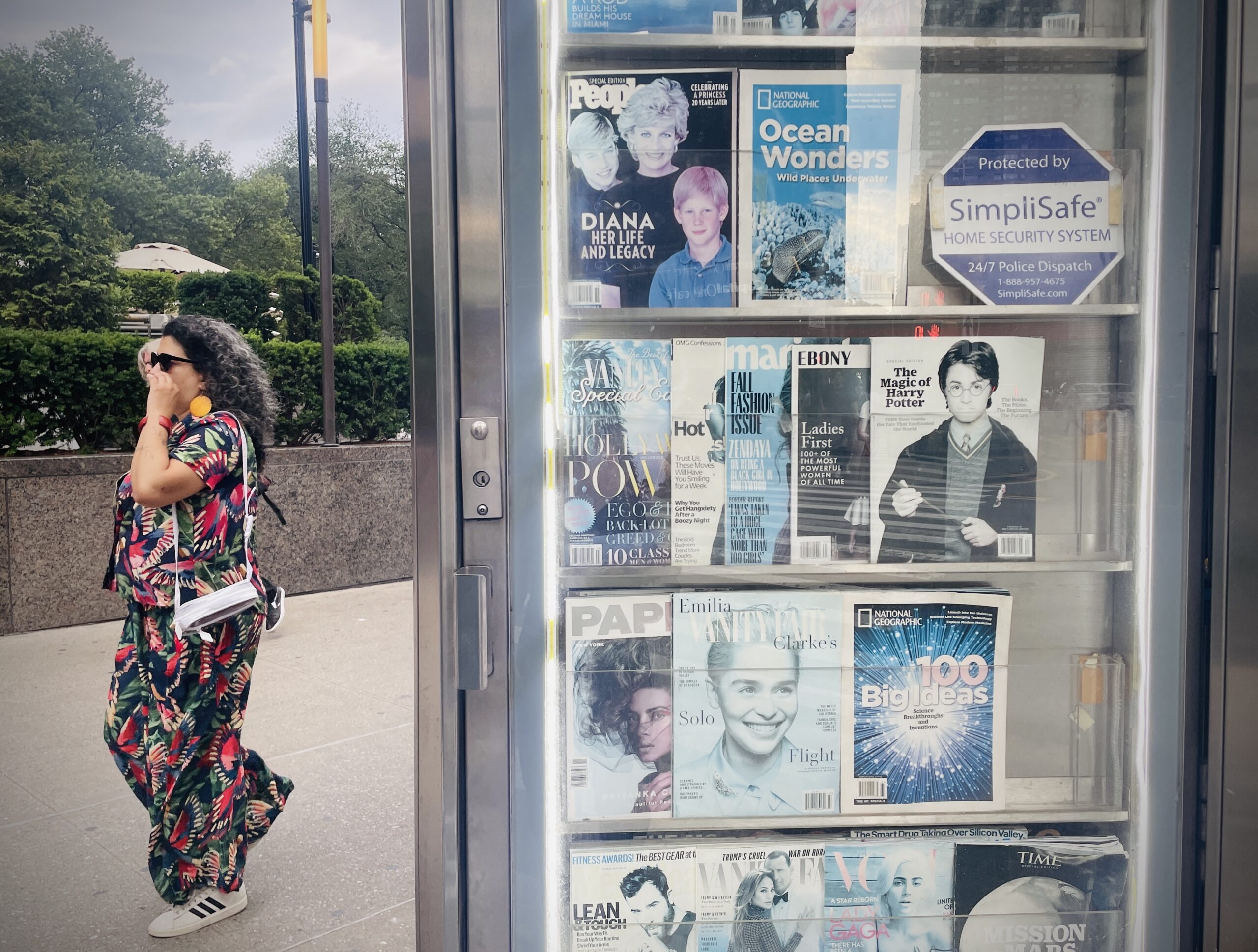
And on 76th Street between Columbus and Amsterdam, sidewalk stickers still remind you to keep a safe six-foot COVID distance.
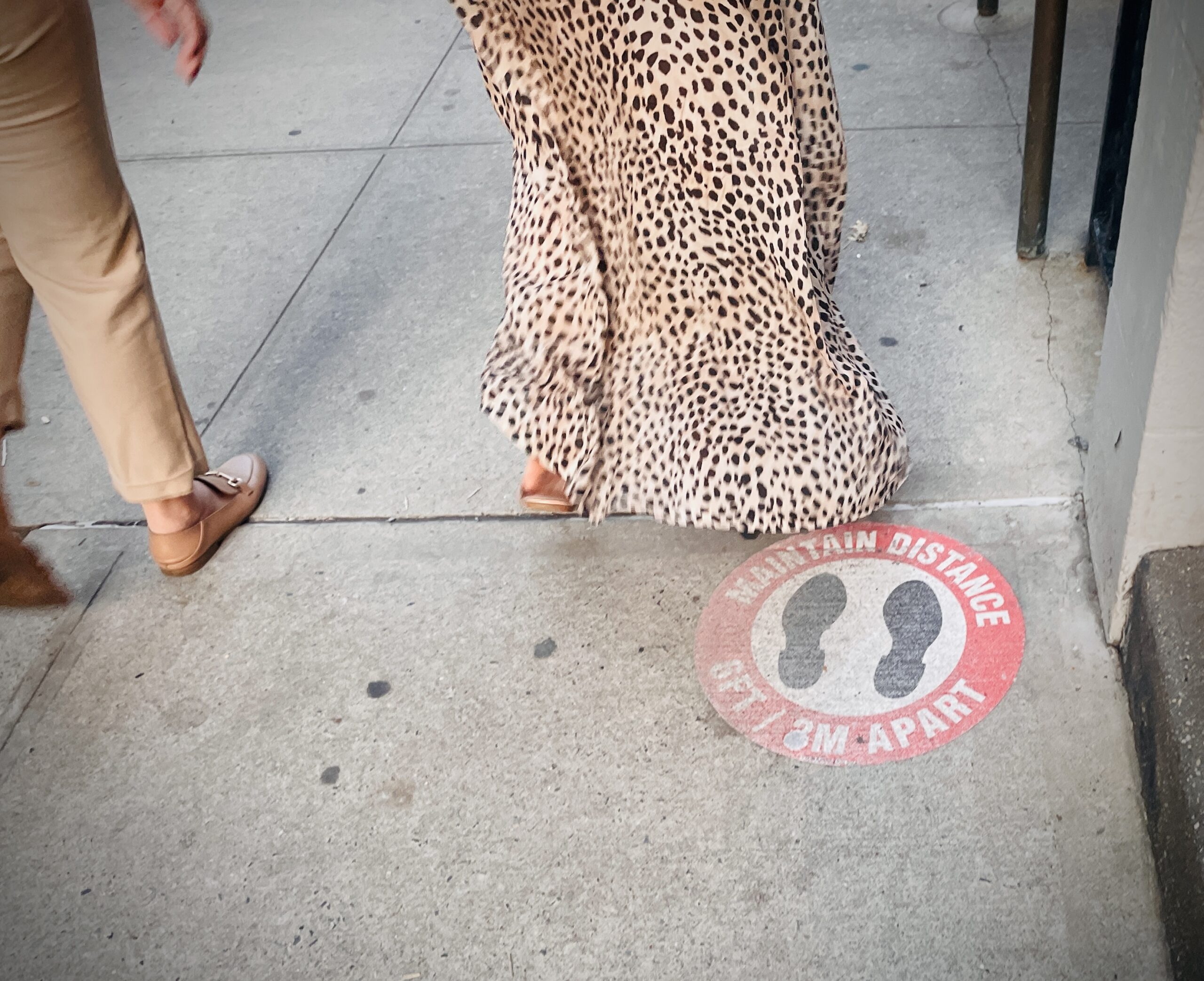
The tinsel tree and the whole crew of forgotten intentions persist because they’re overlooked. Nobody notices or bothers enough to remove them. They’ve mastered the art of blending in while standing out, and in that sweet spot of invisibility, they mark a moment in time—and now just… keep marking it.
Good for them, and they have us to thank. We rarely pay attention. On your daily walks, whether it’s two blocks or twenty, what do you really see? Your brain takes it all in, of course. It steers you around slow walkers and other obstacles, tracks crosswalk countdowns, and keeps you from stepping into whatever that wet substance is on the sidewalk. It’s running the operation without so much as a memo to your conscious mind. But what actually makes it into your awareness? How much of what you see is the world in front of you, and how much is the movie in your mind, playing anxiety, fantasy, or what-I-should-have-said reruns?
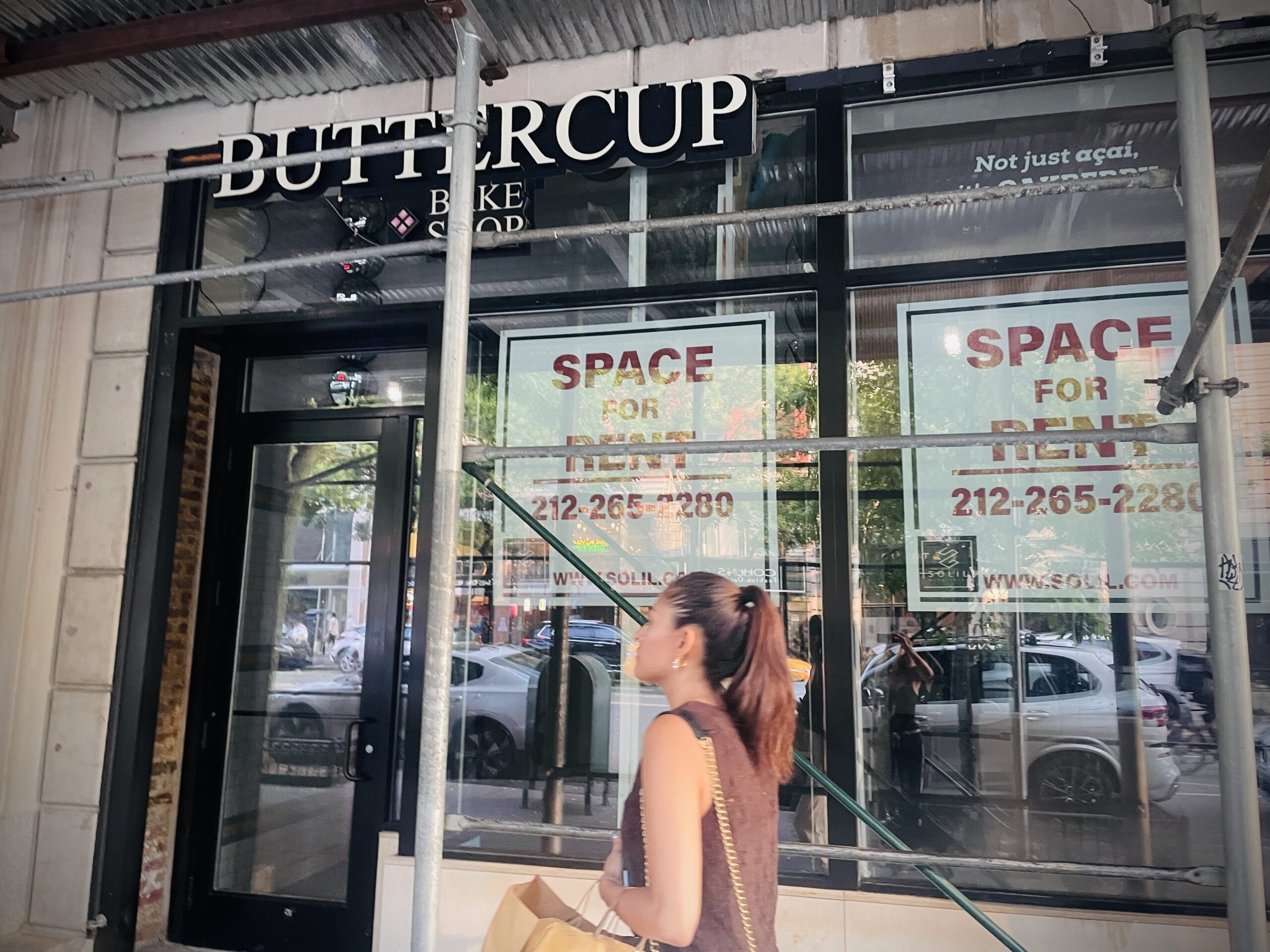 There’s a famous 1999 Harvard study where participants watched a video of a basketball game and were asked to count how many passes one team made. A few seconds in, a person in a gorilla suit strolls right into the middle of the action, faces the camera, thumps their chest, and then walks off again. A gorilla! Yet about half the people watching with full focus didn’t see it. The study showed just how blind we can be to what’s happening right in front of us when our minds are busy with something else. And really, when aren’t they in this age of constant information overload?
There’s a famous 1999 Harvard study where participants watched a video of a basketball game and were asked to count how many passes one team made. A few seconds in, a person in a gorilla suit strolls right into the middle of the action, faces the camera, thumps their chest, and then walks off again. A gorilla! Yet about half the people watching with full focus didn’t see it. The study showed just how blind we can be to what’s happening right in front of us when our minds are busy with something else. And really, when aren’t they in this age of constant information overload?
Believe me, I spend half my life stuck in my upstairs movie theater. But one thing reliably snaps me out of it: walking. What’s playing out here beats anything my brain ever streams. There’s the tiny shoe repair shop squeezed into what’s just a crack between two buildings on Columbus, my favorite view of slick glass towers peeking out from behind old tenements, the guy who skates with his dog, and all those mysterious sidewalk holes—surely the work of particularly ambitious rats. And oh hey, there’s the big dopey smile I can’t hold back whenever I spot Tony Danza. Still crushing. Still the boss.
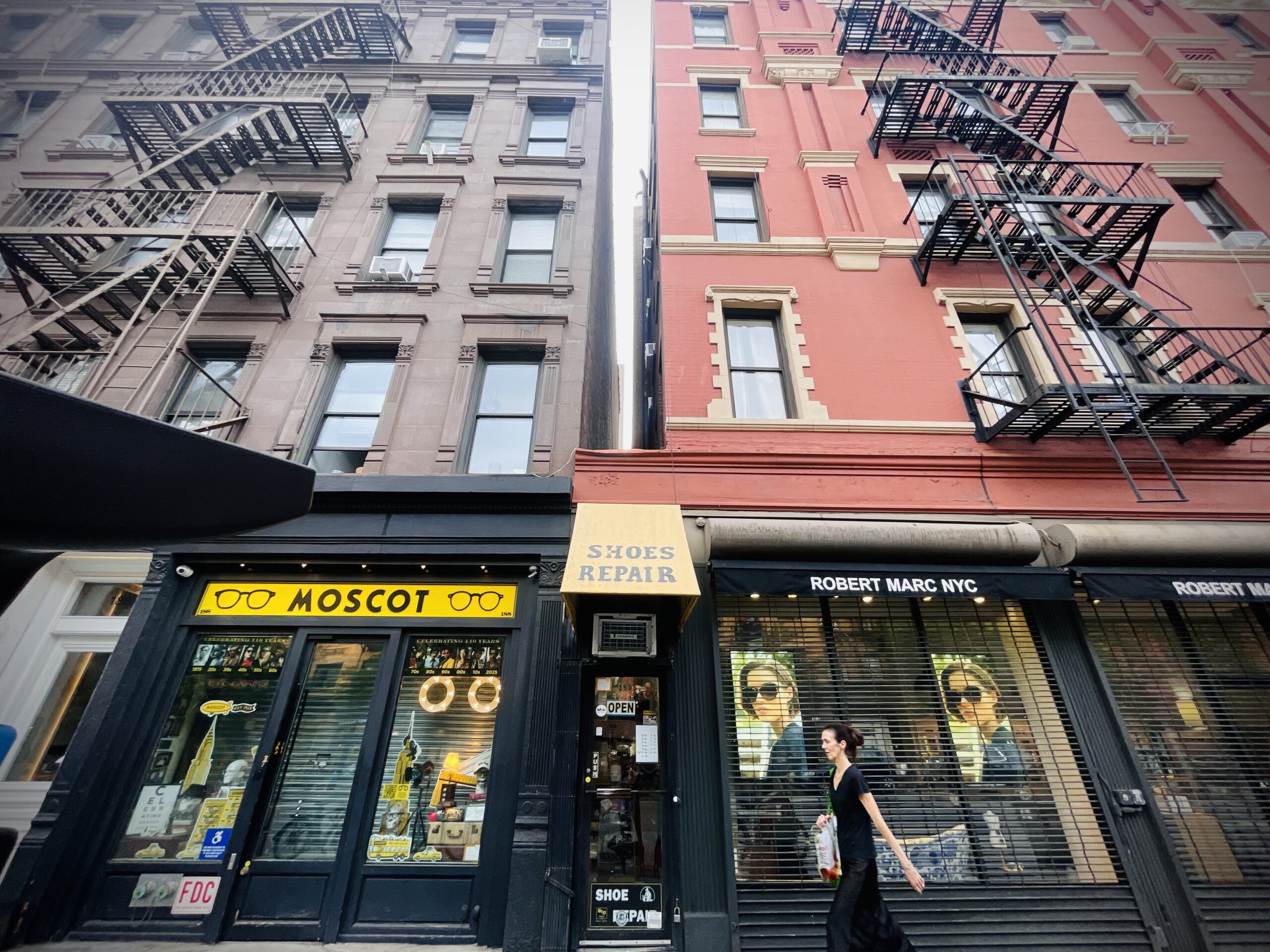 I’m watching you, too, wondering where you’re headed, whether you want to go there, and what you’re dreading or looking forward to today. And please forgive my German stare. We’re known for holding our gaze a little more intense and longer than other cultures might consider polite. But it’s innocent, just a kind of curious ogling. If you catch me at it, feel free to stare back. It’ll startle me, and I’ll instantly switch back to New Yorker and look away.
I’m watching you, too, wondering where you’re headed, whether you want to go there, and what you’re dreading or looking forward to today. And please forgive my German stare. We’re known for holding our gaze a little more intense and longer than other cultures might consider polite. But it’s innocent, just a kind of curious ogling. If you catch me at it, feel free to stare back. It’ll startle me, and I’ll instantly switch back to New Yorker and look away.
The streets, the buildings, you—the more I take in, the more it feels like I belong. Walking with your senses wide open is the best way to connect with the ground you walk on every day. When you start to notice the overlooked, it’ll feel a little less like you’re just passing through, and a little more like home.
The point is not to miss the gorilla in the room. That’s always a pity. But also, maybe don’t start caring too much. Because long live the tinsel on 72nd Street!
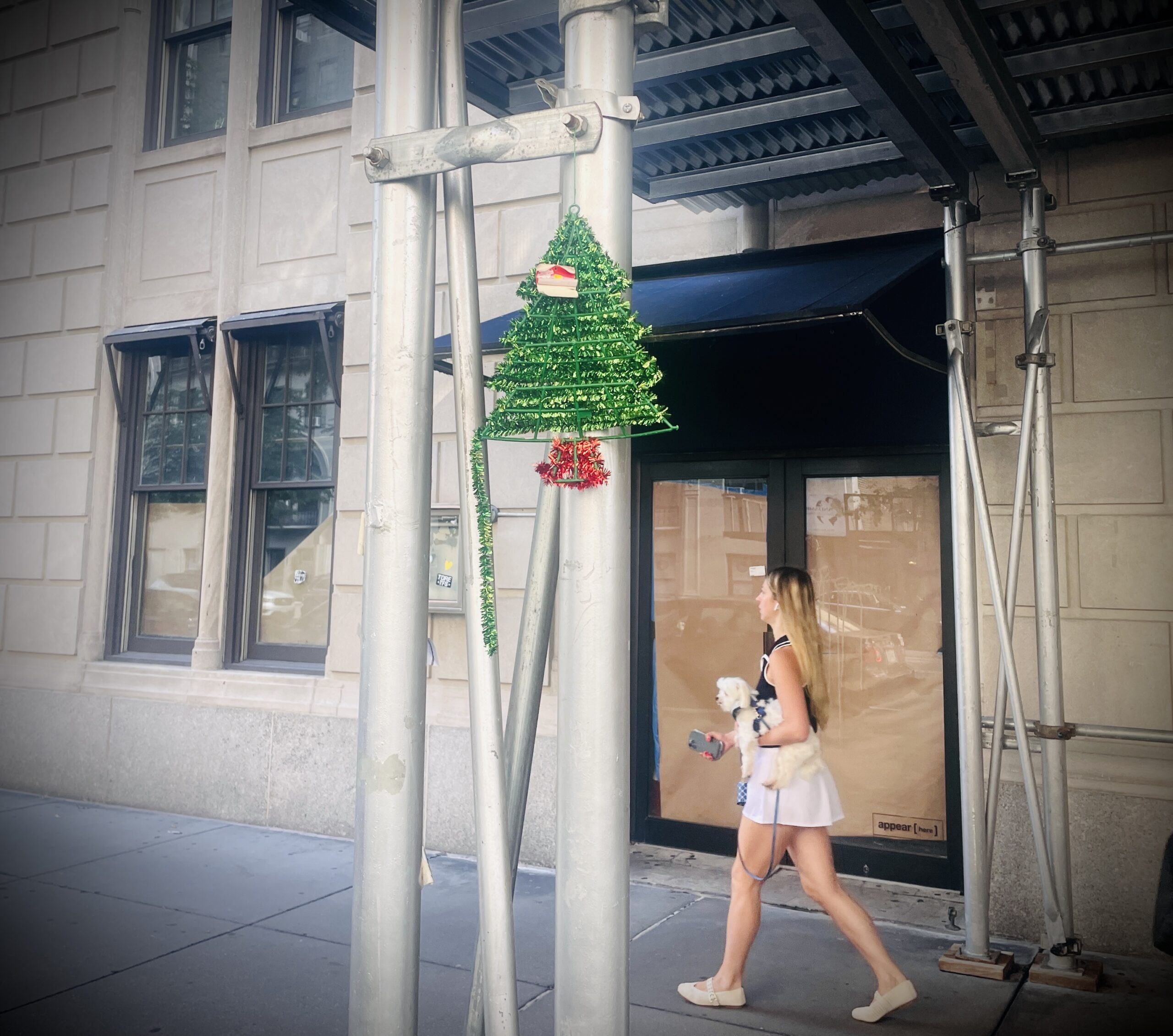 Yvonne Vávra is a magazine writer and author of the German book 111 Gründe New York zu lieben (111 Reasons to Love New York). Born a Berliner but an aspiring Upper West Sider since the 1990s (thanks, Nora Ephron), she came to New York in 2010 and seven years later made her Upper West Side dreams come true. She’s been obsessively walking the neighborhood ever since.
Yvonne Vávra is a magazine writer and author of the German book 111 Gründe New York zu lieben (111 Reasons to Love New York). Born a Berliner but an aspiring Upper West Sider since the 1990s (thanks, Nora Ephron), she came to New York in 2010 and seven years later made her Upper West Side dreams come true. She’s been obsessively walking the neighborhood ever since.
Subscribe to West Side Rag’s FREE email newsletter here. And you can Support the Rag here.
